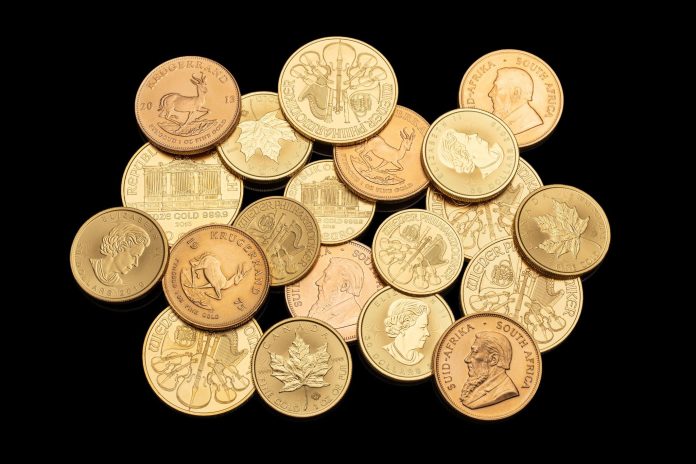Are you considering the possibility of making a risk-free investment, taking into account the present status of the economy? Precious metals, such as gold and silver, are often considered safe haven assets. An effective hedge against economic and inflationary downturns, metal prices tend to climb when the world market declines.
Table of Contents
A regular investor has several options for investing in precious metals.
In the first place, you may go to a dealer and buy coins, silver bullion, or gold bars, whatever you like. This is the most straightforward way to put money to work, but it does not come without risk. One other alternative for indirect investment is the use of an individual retirement account, or IRA, to hold precious metals for you. Precious metals such as gold and silver may be invested in via a retirement account in the same way that stocks and bonds can be.
Another option for people seeking to diversify their portfolios into precious metals is to purchase the stock of gold mining companies. Investing in a manner that is less direct like this can be considered a riskier option than the traditional method of purchasing physical metals.
Agreement Funds are a second kind of investment vehicle (ETF). Exchange-traded funds, often known as ETFs, are a particular kind of mutual fund that may be bought and sold on stock markets. They provide investors the ability to take part in a group of assets without requiring the investors to acquire each individual asset.
The fifth way to put money into precious metals is to buy shares in a mutual fund that invests in the metals. Investors have the chance to take part in a variety of assets via mutual funds, just as they can through exchange-traded funds (ETFs). However, unlike ETFs, mutual funds do not need investors to buy each asset individually. The investment instrument known as a mutual fund is a kind of mutual fund.
No matter what strategy you pick to invest in precious metals, it is crucial that you do sufficient study and fully understand the risks involved. Investments in precious metals are very volatile, with their value increasing or decreasing at any time.
Precious Metals IRA
A precious metals IRA is a kind of individual retirement account that enables investors to put their money into precious metals such as gold, silver, and palladium rather than more traditional assets such as stocks and bonds. This type of IRA is considered to be the finest precious metals IRA.
The Individual Retirement Account (IRA) comes in both the traditional and the Roth varieties. Unlike Roth IRAs, traditional IRA contributions are not taxed at the time of deposit and are only taxable upon withdrawal in retirement. Contributions to a Roth IRA are made using after-tax dollars, in contrast to standard IRAs; nevertheless, withdrawals made by account holders who are at least 59 1/2 years old are exempt from federal income tax.
The ownership of precious metals is permissible inside individual retirement accounts (IRAs), both traditional and Roth varieties. Having stated that, there are a variety of regulations and constraints that need to be taken into mind.
Furthermore, the IRS requires the metals to be kept in a depository approved by the agency.
Additionally, there is an annual limit on how much may be deposited to an IRA. In 2020, you may contribute $6000 to a normal or Roth IRA, or $7000 if you’re 50 or older.
Rolling over funds from a 401(k) into a precious metals IRA may be an option if your employer provides such a plan.
Precious Metals ETFs
ETFs on precious metals give investors a convenient opportunity to get market knowledge on precious metals without actually acquiring custody of the metals themselves.
In addition, buying and selling exchange-traded funds (https://en.wikipedia.org/wiki/Exchange-traded_fund)(ETFs) is a simple process, and one may keep ETFs in a standard brokerage account. Exchange-traded funds provide an exciting new option for anyone looking to invest in gold, silver, and other precious metals. However, they are susceptible to the risk of the market, and their value might potentially decline as a result.
Before you put money into an exchange-traded fund (ETF), you should first educate yourself about the ETF in question and then consult with an expert in the field of finance to ensure that the investment is suitable for your needs.
Gold’s price has increased by more than 400% over the previous two decades, as you may know if you’ve been following the gold market.
As a result of this fact, investors may choose to consider gold investment as a retirement plan option for their portfolios. You can read more about the benefits and drawbacks of putting your retirement funds into gold here, but many savvy investors see it as a secure option.
Continue reading to learn about three different strategies for investing in gold for your retirement years. Those who want to invest in gold for their retirement have a wide variety of choices to select from, including equities, gold-backed securities, and the gold itself.
Invest in actual gold if you want gold for your retirement.
Your retirement account should probably include some real gold as one of the earliest and maybe most apparent methods for investing in gold. Investors acquire gold coins or bars from a merchant. Even while it may seem easy, before making any kind of investment, it’s critical to do your homework and check that the dealer you’re working with has a good reputation.












